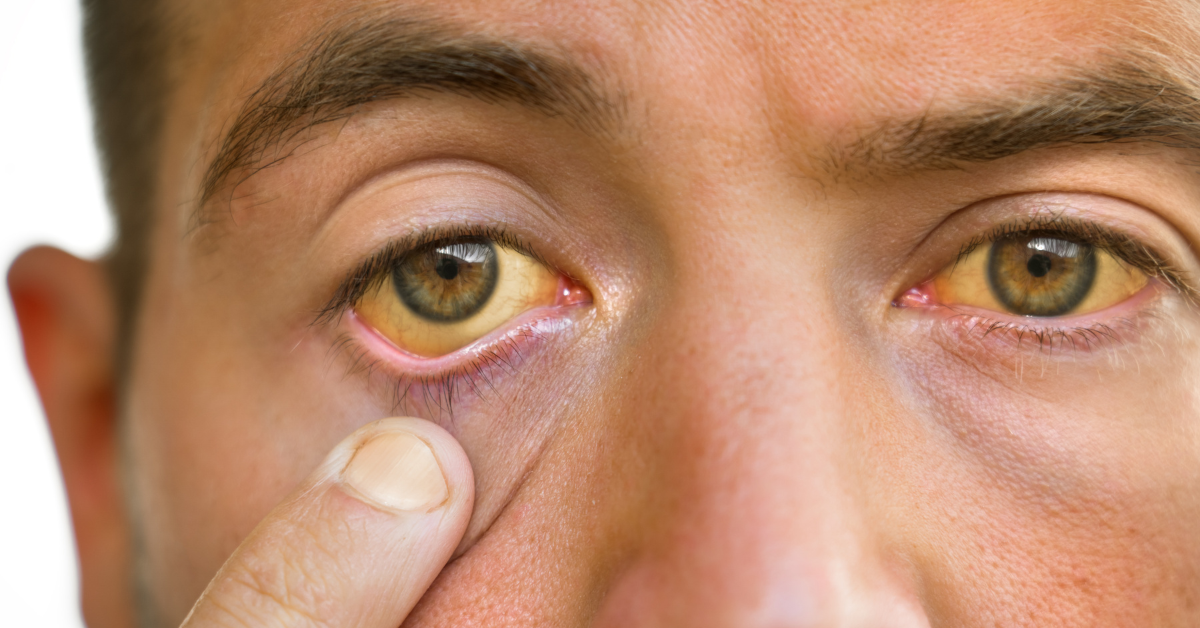Jaundice is a yellowing of the skin, mucous membranes, or eyes that is a symptom of several health problems. Jaundice occurs when there is too much bilirubin in the blood, which then dissolves into the layer of fat under the skin (Mount Sinai). Jaundice does not occur on its own- it must be caused by another condition that causes a buildup of bilirubin in the blood. This is often a disease affecting the liver, gallbladder, or pancreas.
What is jaundice?
Jaundice is a condition in which the skin, whites of the eyes, and mucous membranes turn yellow due to high levels of bilirubin in the blood. Bilirubin is a waste product produced during the breakdown of red blood cells. If excess amounts of bilirubin are being produced, or bilirubin is not being cleared from the blood effectively, jaundice can occur.
The causes of jaundice
Jaundice is fairly common in newborn babies. This is often harmless and occurs when the liver of a newborn baby is not yet mature enough to remove bilirubin. Jaundice in newborn babies often disappears after a few days without treatment. In adults, jaundice can be caused by several diseases or personal factors:
- Hemolytic anemia: increased breakdown of red blood cells causes elevated levels of bilirubin in the blood
- Autoimmune conditions
- Viruses such as hepatitis A, chronic hepatitis B and C, and Epstein-Barr virus
- Certain medications
- Liver disease
- Gallbladder or bile duct problems
- Genetic conditions, such as Gilbert’s syndrome
Source: Cleveland Clinic, 2018
Symptoms of jaundice
Yellowing of the whites of the eyes, mucous membranes, and skin is the most common symptom of jaundice. While the symptoms that occur may be influenced by the cause of the jaundice, common symptoms are:
- Nausea
- Clay coloured stool
- Dark urine
- Flu-like symptoms
- Fever
Source: Cleveland Clinic, 2018
How common is jaundice?
Jaundice is most common in newborn babies. It is estimated to occur in 60% of full-term babies and 80% of premature babies (Assoku, 2022). Adult jaundice is rare and only occurs due to another health condition that increases bilirubin in the blood.
How do you test for jaundice?
Testing for jaundice is done by measuring the amount of bilirubin in the blood. It is possible to do this test with a doctor or using a home test. Homed-IQ’s Liver Function Test checks blood bilirubin levels along with several other key markers for liver health, such as AST and alkaline phosphatase. After collecting the sample and mailing it to a certified laboratory, the test is analyzed and results are communicated directly to the user.
When should I see a doctor about jaundice?
If your test result of the blood test indicates a high bilirubin level or you notice yellowing of the skin or eyes, see your doctor. More investigation is needed to determine the cause of the jaundice and begin necessary treatment.
Treatment of jaundice
When treating jaundice, it is important to first determine the cause. The treatment depends on the underlying disease or condition. Incidentally, treatment of jaundice is not always necessary, because the phenomenon can disappear on its own.
References
Ansong-Assoku B, Shah SD, Adnan M, et al. Neonatal Jaundice. [Updated 2022 Aug 7]. In: StatPearls [Internet]. Treasure Island (FL): StatPearls Publishing; 2022 Jan-. Available from: https://www.ncbi.nlm.nih.gov/books/NBK532930/
Adult Jaundice: Symptoms, Causes, Diagnosis, Treatment & Prevention. (n.d.). Cleveland Clinic. https://my.clevelandclinic.org/health/diseases/15367-adult-jaundice
Jaundice. (n.d.). Mount Sinai Health System. https://www.mountsinai.org/health-library/diseases-conditions/jaundice




